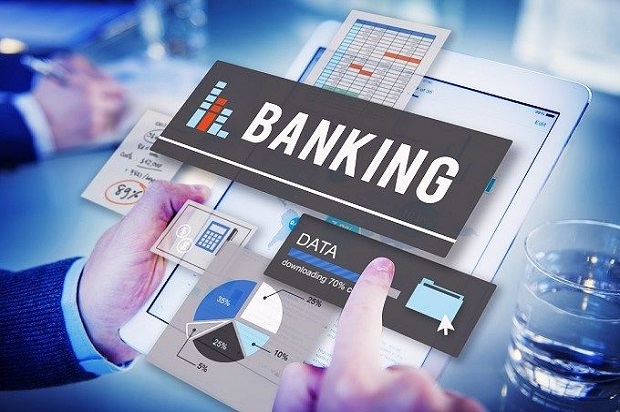Banking Market: Size, Trends, and Key Players

The global banking market is a cornerstone of the financial system, facilitating economic growth, providing credit, and offering a myriad of financial services. As the market evolves, driven by technological advancements and regulatory changes, it is crucial to understand its current dynamics, key players, and future challenges. This comprehensive analysis provides insights into the market size, share, growth, trends, major players, and challenges facing the banking industry.
Market Size, Share, and Growth
Global Banking Market Size
As of 2023, the global banking market is valued at approximately USD 124 trillion in assets. The sector is poised for steady growth, with a projected compound annual growth rate (CAGR) of 6% from 2023 to 2028. This growth is attributed to the increasing demand for banking services, financial inclusion efforts, and the digital transformation of banking operations.
Regional Insights
- North America: Home to some of the world’s largest financial institutions, North America’s banking market is valued at approximately USD 40 trillion. The U.S. dominates this market with a robust regulatory framework and advanced technological infrastructure.
- Europe: With a market size of around USD 30 trillion, Europe’s banking sector is influenced by stringent regulations and a focus on sustainable finance. Key markets include the UK, Germany, and France.
- Asia-Pacific: The fastest-growing region, with a market size of about USD 45 trillion. The growth is driven by rapid economic development, increasing internet penetration, and a large unbanked population in countries like China and India.
Market Share
Major players in the banking market hold significant shares due to their extensive networks, comprehensive service offerings, and strong financial health. For instance, JPMorgan Chase, Bank of America, and ICBC collectively control a substantial portion of the global banking assets.
Market Trends
Digital Transformation
The digital transformation is reshaping the banking landscape. Institutions are investing heavily in technologies like artificial intelligence, blockchain, and cloud computing to enhance customer experience, streamline operations, and improve security.
Open Banking
Open banking is gaining traction, driven by regulatory changes and consumer demand for more personalized services. It allows third-party developers to build applications around financial institutions, fostering innovation and competition.
Sustainable Finance
Banks are increasingly focusing on sustainable finance, offering products like green bonds and sustainable loans. This trend is driven by consumer demand for ethical investments and regulatory pressures to support environmental and social governance (ESG) initiatives.
Mobile Banking
Mobile banking continues to grow, driven by the widespread adoption of smartphones and the demand for convenient banking solutions. Banks are enhancing their mobile apps with features like biometric authentication, instant payments, and AI-driven chatbots.
Major Market Players
JPMorgan Chase & Co.
Overview: As the largest bank in the United States, JPMorgan Chase holds assets exceeding USD 3.2 trillion. The bank is a leader in investment banking, asset management, and commercial banking.
Innovations: JPMorgan Chase is at the forefront of digital banking, with significant investments in blockchain and AI. Its Chase Mobile app is highly popular, offering seamless banking services to millions of users.
Bank of America Corp.
Overview: With assets over USD 2.8 trillion, Bank of America is a major player in global banking. The bank serves approximately 66 million customers worldwide.
Innovations: Bank of America has focused on digital enhancements, introducing the Erica virtual assistant and a robust mobile banking platform. These innovations have significantly improved customer engagement and service efficiency.
Industrial and Commercial Bank of China (ICBC)
Overview: ICBC, the world’s largest bank by assets, has a total asset value of approximately USD 4.3 trillion. The bank serves a vast customer base in China and internationally.
Innovations: ICBC leverages big data and AI to enhance risk management and customer service. Its digital banking platform is a leader in China, offering comprehensive services to a wide user base.
Wells Fargo & Co.
Overview: Wells Fargo, with assets of about USD 1.9 trillion, offers a variety of financial services, including retail and commercial banking.
Innovations: The bank has invested heavily in digital transformation, providing advanced mobile banking services and launching the Zelle payment system for peer-to-peer transactions.
HSBC Holdings plc
Overview: With assets totaling approximately USD 2.7 trillion, HSBC has a strong global presence, particularly in Europe and Asia.
Innovations: HSBC has embraced open banking and is committed to sustainability, offering various green finance products. Its digital initiatives aim to streamline banking operations and enhance customer experience.
Market Challenges
Regulatory Compliance
The banking industry faces constant regulatory changes aimed at ensuring financial stability and consumer protection. Compliance with these regulations requires significant resources and can impact profitability.
Cybersecurity Threats
With the increasing digitalization of banking services, cybersecurity threats are a major concern. Banks must invest heavily in security measures to protect sensitive customer data and maintain trust.
Economic Uncertainty
Global economic conditions, including inflation, interest rate fluctuations, and geopolitical tensions, can affect the banking sector’s stability and growth. Banks need to be resilient and adaptable to navigate these challenges.
Technological Disruption
While technology offers numerous opportunities, it also presents challenges. Banks must continually innovate and adapt to stay competitive, which requires substantial investments in technology and talent.
Conclusion
The banking market is dynamic and multifaceted, characterized by significant growth, ongoing digital transformation, and evolving consumer demands. Major players like JPMorgan Chase, Bank of America, ICBC, Wells Fargo, and HSBC lead the market with innovative strategies and extensive digital capabilities. However, the industry also faces challenges, including regulatory compliance, cybersecurity threats, economic uncertainty, and technological disruption. To thrive in this ever-changing landscape, banks must remain agile, invest in technology, and focus on delivering exceptional customer experiences. The future of the banking market looks promising, with ample opportunities for growth and innovation.
READ MORE: https://www.hituponviews.com/











